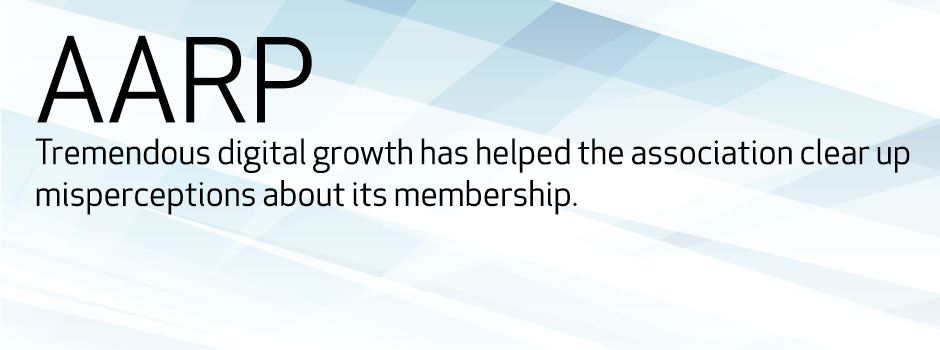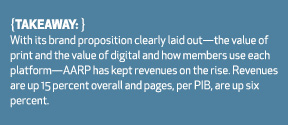



The advertising world is obsessed, to say the least, with the 18-34-year-old market. Accordingly, this has been a primary hurdle for AARP, which relies on advertising for revenue across its brand portfolio. And despite the association’s tremendous reach—22 million in print for AARP The Magazine and more than 7 million monthly uniques online—it’s faced a challenge in making the media industry understand the purchasing power of the 50+ market.
This factor has been a key influence on how the media group has repositioned its brands. Especially in digital.
“I would say that the biggest thing that has changed in our overall strategy is the growth of our digital property,” says Shelagh Daly Miller, vice president and group publisher of AARP Media Sales. “The last three years have seen a tremendous amount of growth. But our challenge is helping the media industry, who we know is on the young side, understand who the 50+ adult is and why that group is important to their business. There’s still quite a bit of ageism out there.”
Like at other associations, the sales operation is set up solely to offset the cost of producing the media properties.
Revenues are up 15 percent across the association’s media so far this year compared to the same period in 2013. A major reason why is AARP’s clear positioning, says Daly Miller. “We continue to be out in the market educating and trying to dispel myths about who the 50+ adult is,” she says.
Also, the group is very aware of its for-profit competitors. While Miller says they compete with other associations, it’s the general market brands that are the main competitive set.
But Daly Miller says AARP’s three brands—AARP The Magazine, AARP Bulletin and AARP.org—are similarly branded while publishers like Hearst and Meredith reach the same market with properties that are branded differently. AARP’s brand unity is a strength, she says.
Specific Value Assigned to Each Platform
However, the website is not just a digital reproduction of the magazine. It’s set up to provide additive value to members. “It was not created to support the magazine,” says Daly Miller. “It was created as a resource for our members. It’s used differently by our members, which has translated into a high-performing content asset.”
And with that range of content value—lifestyle in the magazine, information resource on the website—the media group has a similarly comprehensive range of ad products. “We have pretty much everything to offer our advertisers that everyone else has,” says Daly Miller. “We have rich media, interstitials, game reskins, microsites, opportunities to leverage data, retargeting, realtime campaign optimization—we kind of have it all.” ![]()
